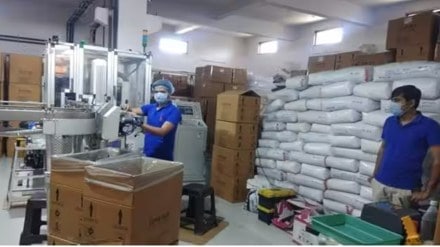In view of the prevailing slowdown in the chemical sector, industry players are changing their focus to specialty chemicals in a bid to improve margins. Recent industry data indicates that the overall chemical industry has witnessed negative growth in the past three quarters. In comparison, the specialty chemicals sector has witnessed positive growth and has done reasonably well.
Industry insiders believe that while the specialty chemical sector has immense growth potential, the industry needs to deal with challenges like infrastructure, research & development and long term policy making if it wants to compete in the international market.
The Indian chemical industry can be broadly classified into bulk chemicals, specialty chemicals, agrochemicals, petrochemicals, polymers, and fertilisers. It covers more than 80,000 commercial products. According to data collated by India Brand Equity Foundation, a trust established by the Ministry of Commerce and Industry, the specialty chemicals segment constitutes 22% of the total chemicals and petrochemicals market in India. A recent CRISIL report says that the specialty chemicals market in India would grow faster than China, increasing its market share to 6% by 2026 from 3-4% in fiscal 2021.
Maulik Patel, Chairman and Managing Director, Meghmani Finechem Limited, a leading Ahmedabad-based chemicals manufacturer, told FE, “The demand crunch in the European and American markets has impacted our business because some of our clients are exporters also. We have faced inventory losses as we had high cost inventories. This quarter, the revenue for Meghmani Finechem witnessed a fall of 15% to Rs 455 crore. But the yoy volume for derivatives and specialty chemicals saw a growth of 11% and its revenue share reached to 38% from 21% in the previous year.”
He further added, “The situation is the same for the rest of the manufacturers who deal with specialty chemicals. I believe that the Indian chemical sector is moving towards specialty chemicals. In terms of demand, the Indian market is in a phase of transition. Take the case of epichlorohydrin (ECH). Currently there is a demand volume of around 2 mmt. But seeing the growth of infrastructure, auto demand and construction growth, it is expected to double in the coming two or three years.”
Patel maintained that there was a lack of international demand “but there is enough demand in the domestic market and focus on the import-dependent chemicals can be a way forward.” He also stated that India is a big market and in the coming years, global players will be looking for domestic players to partner with. “In order to avail that and to compete with global players, India needs to get over the infrastructure and R&D challenges,” he said
It may be mentioned that India is the 6th largest producer of chemicals in the world and 3rd in Asia, contributing 7% to India’s GDP. India’s Chemical sector is anticipated to grow to $ 300 billion by 2025 and $ 1 trillion by 2040 from $ 220 billion in 2022.
Abhay V Udeshi, Chairman, Basic Chemicals Cosmetics and Dyes Export Promotion Council, said, “The issues plaguing China are a cause for worry and countries are looking for an alternative to China. I think India has the potential to fulfil the void being created by China. But we need to deal with issues like lack of quality infrastructure, sustainable policy framework and research and development.”
He said, “If India wants to replace China as the manufacturing hub of the world then we need to have quality plug and pay infrastructure for basic and necessary services. We need to have long term policies so that the manufacturer can be sure about his future planning. For example, the RoDTEP (Remission of Duties or Taxes on Export Products) policy for the reimbursement of taxes and duties expires on September 30, 2023. The government may extend it but the industry needs certainty about policies if they want to expand and plan for next five or 10 years. And the government needs to provide R&D incentives in the form of tax benefits for the investment in R&D.”
“It is a learning curve, the government is providing good support to make MSMEs more sustainable. Though the signals of demand revival can be seen now, 2023 is still not looking very good. The whole world is looking for self-sufficiency and we need to understand the demand patterns in this changing market”, added Udeshi.
